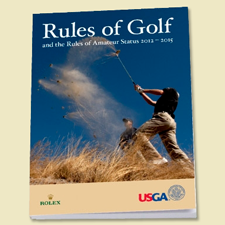The recent proposed rules change to prohibit anchoring cuts right to the most fundamental pillar of the USGA and R&A as the rule making bodies of the game of golf. For golf’s rule makers there is nothing more sacred than having one set of rules that govern the game. But when you look beyond the surface do we really have one set of rules?
During this “comment period” for the proposed rules change to eliminate the anchored putting stroke many have suggested that perhaps now would be a good time to formally split the rules between amateurs and professionals. Since the anchored technique has allowed many to continue to enjoy a game that was causing them significant psychological distress, why don’t we let these poor weekend duffers continue to use this method while eliminating it from the professional game? Some have used the example of college vs. professional football where subtle differences in the rules exist. (Most notably one foot vs. two feet in bounds constitutes a catch.)
The truth is that golf and football are already more similar than different when it comes to their approach to rule making. In football there are 11 men on each side of the ball, a touchdown is 6 points and you can’t run past the line of scrimmage and throw the ball downfield. In golf, there are 18 holes in a round, you hit the ball with the head of the club and your goal is to do it as infrequently as possible. Let’s face it, you have to be pretty serious to appreciate the difference between the 18 feet 6 inch spacing of professional hash marks compared to the 40 foot spacing in the college game. While this certainly changes play calling in many situations and creates an added challenge for college kickers, the difference certainly doesn’t cause us to mistake one or the other as rugby. On the professional golf tours, players are not allowed to use distance measuring devices and must depend on the old fashioned yardage book (and their caddies) to determine distance. In the amateur game Bushnells and Sky Caddies are as common place as double bogies. Much like the hash mark example in football, this distinction hardly erodes the basic essence of the ancient game (although some purists might argue this point).
The fact is that golf already has two sets of “rules.” Anyone who thinks otherwise has not spent much time at their local muni watching the average amateur take relief from a cart path (“this okay here Hank?”) or noticing the “ball drop” for a water hazard that is conveniently placed so that the hackers don’t have to deposit a small bucket into the water in order to complete the round “in accordance to the rules.” A few folks continuing to anchor hardly poses a serious threat to the game as we know it and is unlikely to cause a mass exodus from the sport as golfers choose strict adherence to the rules over an enjoyable afternoon on the golf course with their buddies.
The average golfer would need serious therapy if they were required to complete every round in strict accordance to the rules. Every golfer determines the line between respect and adherence for the rules of the game and having fun. For some of us respect and adherence to the rules actually make the game more fun but to insist that everyone do the same might cause all but professionals and top tier amateurs to quit the game. One set of rules is a great goal, but let’s not take it too literally.


